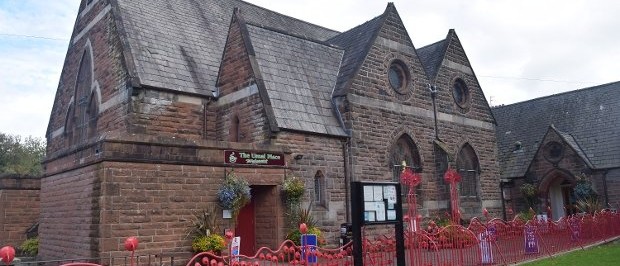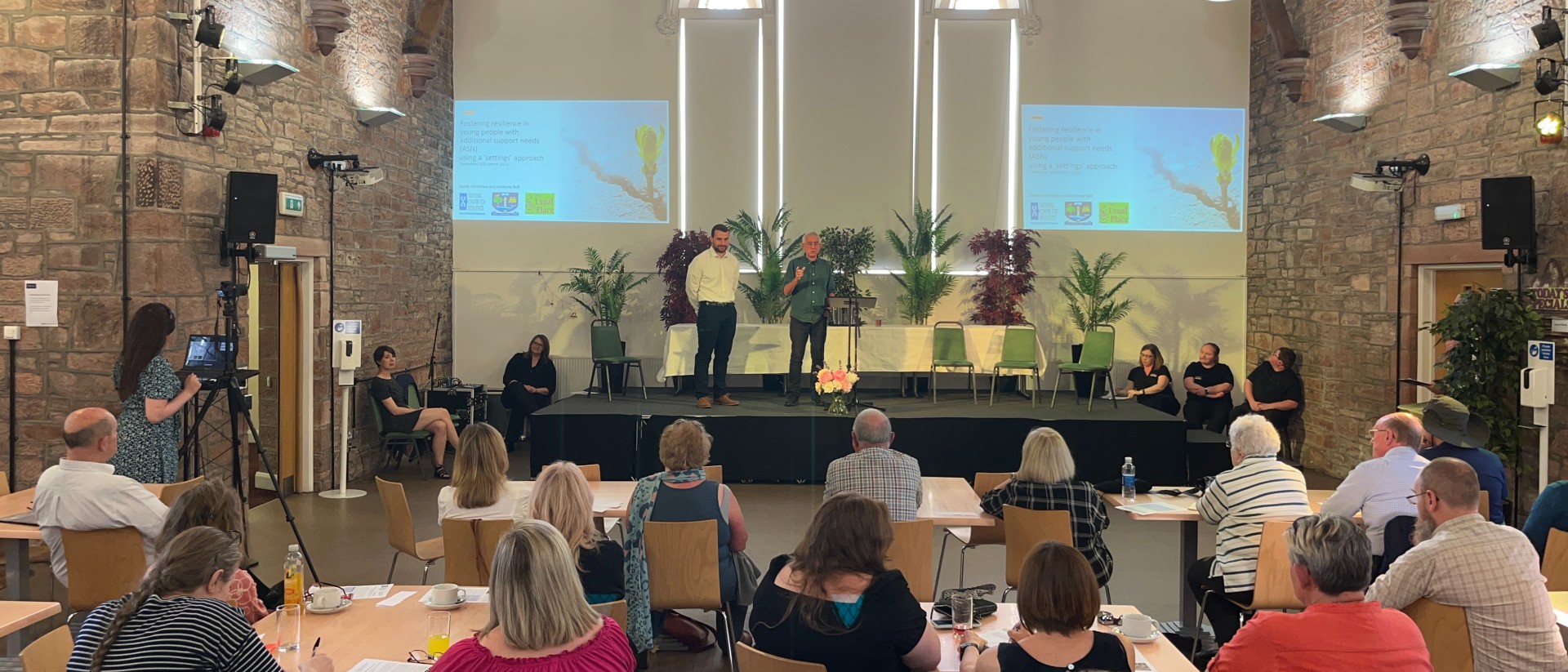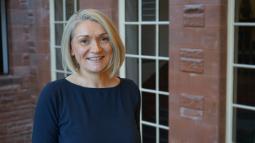
Fostering Resilience in Young People with Additional Support Needs (ASN) Using a ‘Settings’ Approach
The Project
Inspired by the recent COVID-19 pandemic, this project, delivered by University of Glasgow researchers Dr Sandy Whitelaw and Anthony Bell, investigated how organisational 'settings' (such as a work place) might be used to promote resilience amongst those with additional support needs (ASN).
The project was funded by the NCR as a pilot to discover more about resilience to extreme events and how this might be supported, amongst those with ASN. It was completed by Sandy and Anthony in partnership with The Usual Place, a social enterprise cafe within Dumfries who provide employment, training opportunities and support specifically for those with ASN.
The project's findings have been written up in a full report, which is also available as a summary document and easy-read. They were then presented to a select audience at a knowledge exchange event held at The Usual Place in June 2022.
Research questions:
- How is ‘resilience’ broadly conceptualised within the setting?
- What features of TUP as an organisation are significant in promoting resilience and what barriers exist?
- What has been the specific effect of COVID-19 related circumstances on the potential for TUP to promote resilience within its young people?

Project summary
Thu, 23 Jun 2022 15:28:00 BST

Knowledge Exchange
Wed, 06 Jul 2022 15:25:00 BST
Project Team
Special thanks go to all staff and trainees at The Usual Place and University of Glasgow who contributed to the project and following knowledge exchange event.
The core project team were:
Dr Sandy Whitelaw (University of Glasgow)
Alexander.Whitelaw@glasgow.ac.uk
Anthony Bell (University of Glasgow)

Paul Barber (The Usual Place)

Ailsa Mackay (National Centre for Resilience)
Next steps
The reports have been written, the findings presented to stakeholders - what next?
A journal article is currently in the planning stages, with the hope of submitting it to the 'Journal of Intellectual Disabilities'.
The team are talking to representatives from Inspire Scotland and The Usual Place about possible further work in this specific area. And looking at ideas with the University of Glasgow's MAPE (MA Primary Education) colleagues about how these ideas might be applied within a school setting.
And sitting alongside all of this are the suggestions of further research within the report itself, summarised below:
|
Key point |
Potential future work |
|
1. Our work shows that TUP provides an effective organisational context in which trainees can negotiate a number of different tensions that ultimately foster resilience. The organisational ethos and tenacity that TUP displayed in during the pandemic in maintaining wellbeing and resilience was a particularly significant asset in the organisation. |
A more detailed examination of how TUP as a potentially ‘agile’ organisation nurture and enact such a culture would be valuable. |
|
2. We have started to understand how in applied ‘on-the -ground’ circumstances, practitioners successfully negotiate the constructive tension between ‘exposure’ and ‘support’ in fostering resilience. |
A more detailed examination of the specifics of this form of practice would be constructive |
|
3. These insights are highly specific to the particular organisational context of TUP and young people with ASN. |
There is scope to explore the extent to which these resources and approaches have the potential to be translated into other types of organisational settings – for example, schools, workplaces. |
|
4. TUP showed particular organisational strength during the acute crisis of the COVID-19 pandemic and associated lockdown in helped trainees cope with anxiety, fear and loneliness. |
There is scope to explore the extent to which this specific response might be translated into other emergency responders and responses. |
Table 4 from 'Fostering Resilience in young people...' full report, pg. 17
"More practically, we would suggest the following further pieces of work ‘next possible steps’:
- a more detailed examination of how TUP specifically nurtures and enacts such a culture that fosters resilience,
- a more detailed examination of the specifics of a form of practice that successfully negotiates the constructive tension between ‘exposure’ and ‘support’ in fostering resilience,
- an exploration of the extent to which TUP specific resources and approaches have the potential to be translated into other types of organisational settings – for example, schools, workplaces,
- and an examination of the extent to which TUP’s COVID-19 specific responses might be translated for emergency responders and other emergency responses."
'Fostering resilience in young people...' pg 19






